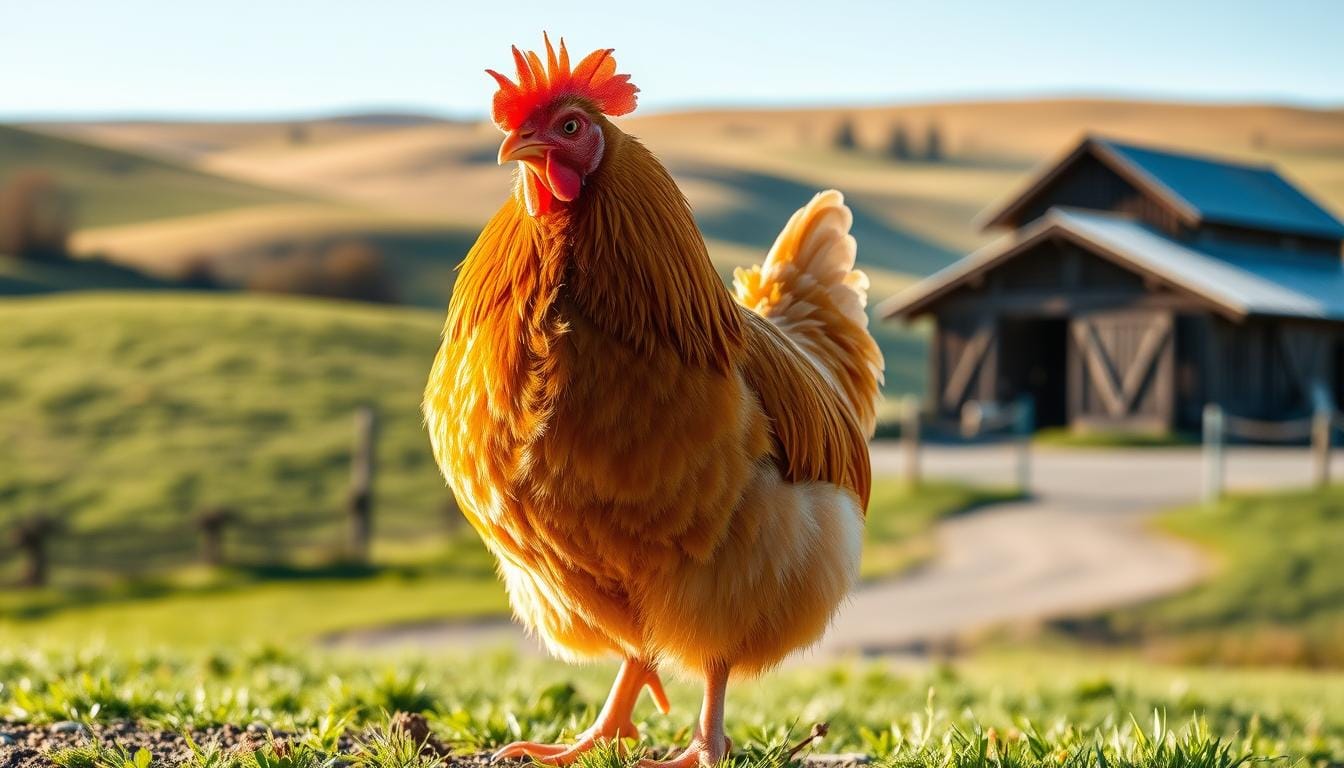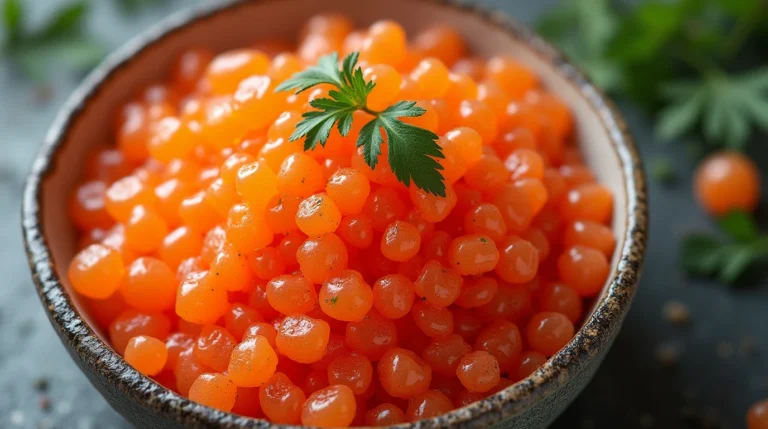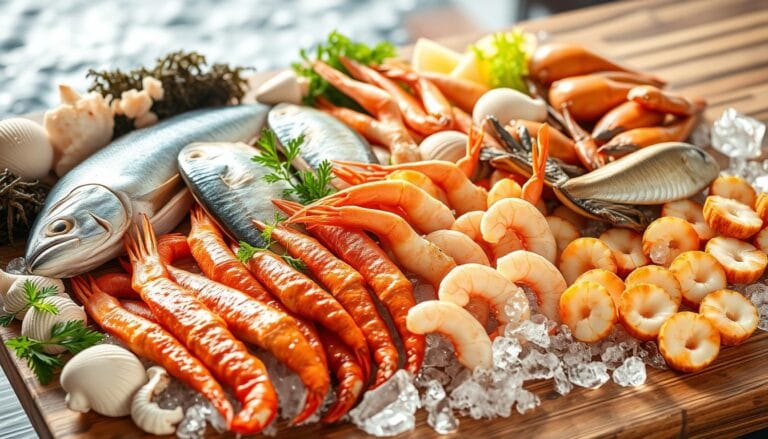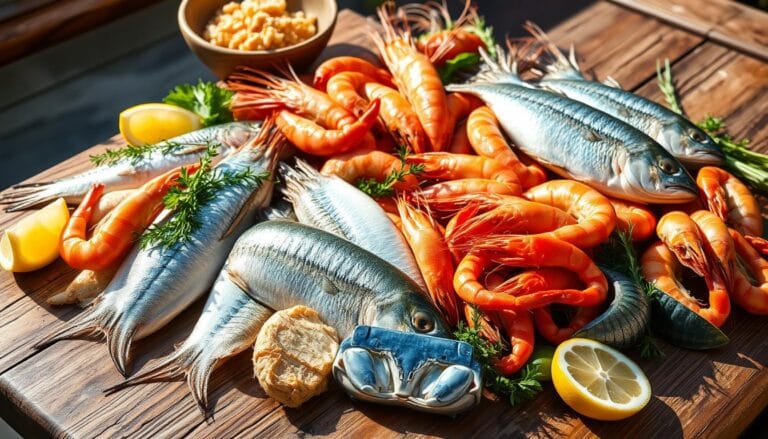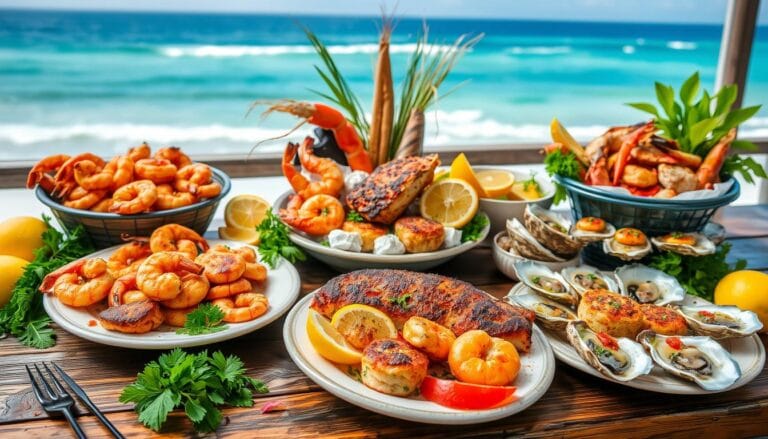Salmon Faverolle Chicken: The 5 Best Reasons to Raise Them
Imagine stepping into your backyard and hearing a gentle clucking sound. It instantly warms your heart. The Salmon Faverolle chicken is known for its charm and affectionate nature. It comes from the village of Faverolles in France, dating back to the 1800s.
This breed has five toes and lays good eggs. It’s a mix of utility and beauty, making it a favorite among backyard chickens.
In this guide, you’ll learn about the Salmon Faverolle chicken. You’ll discover their physical traits and their friendly nature. This knowledge will show you why they’re loved in poultry farming.
Whether you’re experienced or new to chicken breeds, knowing about Salmon Faverolles will improve your experience. It will help you have a happy and productive flock.
Table of Contents
Introduction to the Salmon Faverolle Chicken
The Salmon Faverolle chicken comes from the late 1800s in Faverolles, France. It was made for both meat and eggs. These birds are known for being friendly, making them great for families.
They have unique features like feathered legs, muffs, and a five-toe structure. These traits make them stand out in the world of poultry.
When you think about raising chickens, Faverolles are a good choice. They adapt well to different places. This makes them perfect for both backyard flocks and beginners.
Even though they are friendly, Faverolles can be quite loud. This might not be good for city living. Knowing this helps you see how versatile and charming Salmon Faverolle chickens are.
The Unique Appearance of Salmon Faverolle Chickens
Salmon Faverolle chickens have a special look that catches the eye. They are loved by many for their unique features. Their fluffy muffs and beards make them stand out. Their feathered legs add to their charm, making them easy to spot.
Physical Characteristics
Salmon Faverolles have traits that make them special. They have:
- Feathered legs that make them look unique
- Five toes, unlike most chickens who have four
- A sturdy body, with males weighing about 8 pounds and females around 6.5 pounds
They are big and colorful, adding life to any flock.
Color Varieties
Salmon Faverolles are known for their beautiful colors. They have a mix of honeyed salmon and lighter underbellies. Roosters have even more striking colors, with black and mahogany tones.
In the U.S., Salmon is the most common color. But, there are also White, Blue, and Buff varieties. These colors add to the salmon faverolle appearance.
Salmon Faverolle Chicken Personality and Temperament
Getting to know the salmon faverolle temperament is key for those thinking of raising these special chickens. They are known for being gentle, making them a great fit for families. Their calm nature lets kids play with them safely, building a strong bond between humans and birds.
Docile Nature
Salmon Faverolles are known for their gentle nature. They are calm and laid-back, which means they don’t fight much. This makes them easy to be around and helps them get along with other chickens.
Social Interaction with Owners
Salmon Faverolle chickens love people and enjoy spending time with them. They like to be held and will even sit on your lap. This friendly behavior strengthens your connection with them and adds joy to your day.
Salmon Faverolle Chicken Care Requirements
Taking care of your Salmon Faverolle chickens requires specific steps to keep them healthy and productive. A well-built chicken coop is key to protect them from predators and provide a cozy home. It’s important to give them enough space and good air flow for their well-being. This part will cover what your coop needs and what to feed them to keep them happy and healthy.
Coop Specifications
Your chicken coop needs to meet certain standards for your Salmon Faverolle chickens. Here are some key points:
- The coop should be dry, secure, and spacious, offering at least 4 square feet per bird to allow for free movement.
- Ensure proper ventilation to maintain a healthy air quality inside the chicken coop.
- Include nesting boxes, providing at least one for every three to four hens for egg-laying comfort.
- Perches should be low, as Faverolles are not heavy climbers but enjoy resting off the ground.
Dietary Needs
It’s important to know what your Salmon Faverolle chickens need to eat to stay healthy. A balanced diet should include:
- Feed with a protein level of 16-18%, ensuring optimal growth and egg production.
- Access to calcium is vital for laying hens to produce strong eggshells.
- Fresh, clean water must be available at all times to keep them hydrated.
- Offering assorted treats, such as fruits and vegetables, can contribute to their overall well-being and satisfaction.
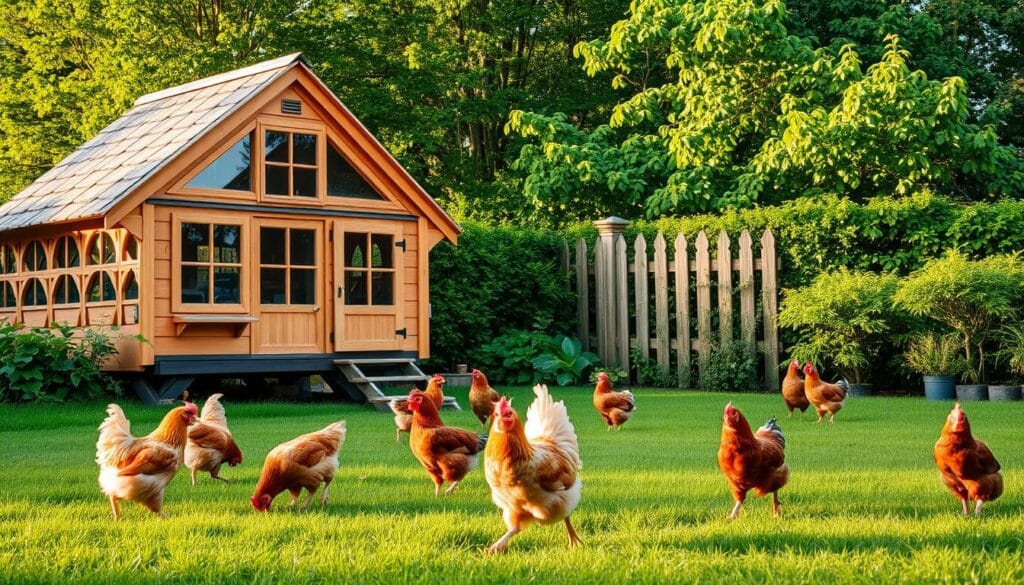
Egg Production and Quality of Salmon Faverolle Chickens
Salmon faverolle chickens are great for backyard flocks. They lay eggs well and reliably. This makes them a big help in your sustainable egg supply.
Egg Laying Frequency
Salmon faverolle hens start laying eggs at 5 to 6 months old. They lay around 180 to 240 eggs a year. In the best months, they give 4 to 5 eggs a week.
Egg Characteristics
The eggs are medium size, with colors from light brown to pink. They have strong shells and taste great. This makes them perfect for cooking or selling.
They keep laying well even in winter. So, you can count on a steady supply all year.
Cold and Heat Tolerance of Salmon Faverolle Chickens
It’s key to know how Salmon Faverolle chickens handle cold and heat. They’re pretty good in cold weather, thanks to their French roots. Taking care of them in different climates helps them stay healthy all year.
Winter Hardiness
Salmon Faverolle chickens can handle cold pretty well. They can stay warm in temperatures below 32°F (0°C). But, they need extra care when it gets colder than 20°F (-6°C).
Make sure their coop is warm and well-ventilated. This helps them stay cozy in winter. Also, give them more food to keep warm.
Bad weather can cause frostbite on their faces. This is serious and can lead to bigger health problems if not treated.
Summer Care Tips
In hot weather, Salmon Faverolle chickens need special care. They don’t do well in high heat. So, give them lots of shade and fresh water.
Also, make sure their coop has good air flow. This keeps them from getting too hot. Watch for signs they’re not doing well in the heat.
Keeping an eye on them helps prevent health issues. This way, your chickens will stay happy and healthy.
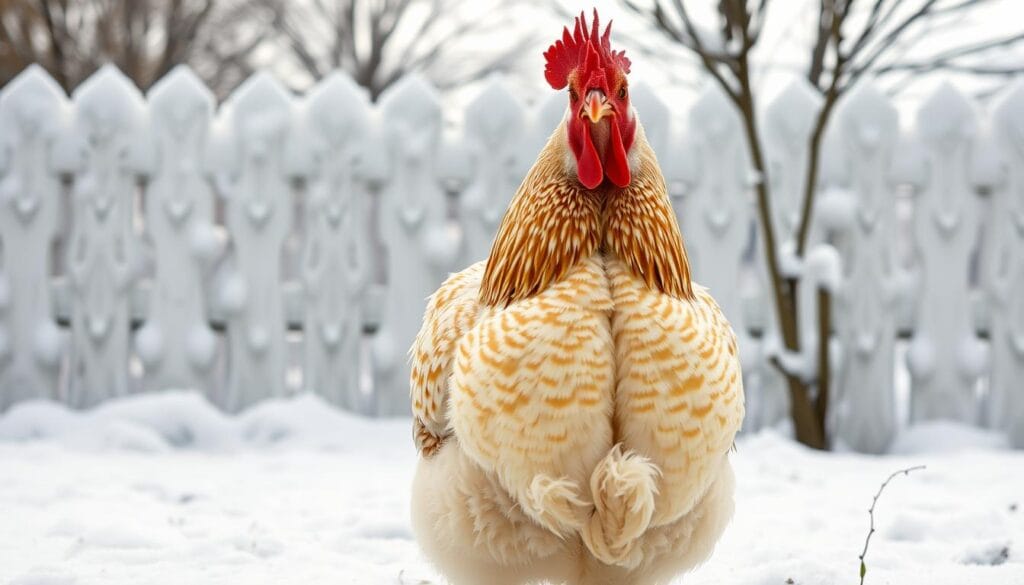
Housing and Space for Salmon Faverolle Chickens
Creating a good home for your Salmon Faverolle chickens is key. A well-designed chicken coop keeps them safe from predators. It also makes sure they’re comfortable. This setup helps these gentle birds live their best lives.
Ideal Coop Setup
When setting up your chicken coop, aim for 8-10 square feet per bird in the run. This gives each chicken enough room to move and act naturally. Inside, make sure there are solid nesting boxes for each 3-4 hens. This is where they can safely lay eggs.
Also, include low perches between 2 to 4 feet. These spots are perfect for resting and relaxing.
Run Space Requirements
Run space is very important. It helps keep Salmon Faverolle chickens happy and stress-free. These birds love to forage and need outdoor time. A big, well-ventilated run makes them feel happy and less cramped.
Raising Salmon Faverolle Chickens: Considerations
Understanding the needs and behaviors of Salmon Faverolle chickens is key to a happy home. They are known for being friendly and calm, making them great for social groups. Their friendly nature affects how they live together, so it’s important to watch over them.
Social Dynamics in Flocks
Salmon Faverolle chickens do best in calm groups. They might get picked on by stronger birds, so it’s best to keep them with gentle friends. Watching how they interact with each other helps keep them happy. Mixing them with other friendly breeds can help them get along well.
Handling and Interaction
It’s important to spend time with your Salmon Faverolle chickens to build trust. Regular interaction keeps them friendly and eager to be around you. They often hop onto your lap or look for friends, showing their love for people.
This interaction is a big part of the fun of raising chickens. It shows how these birds can form strong bonds with people.
Breeding Salmon Faverolle Chickens
Breeding Salmon Faverolle chickens is a thrilling venture for those wanting to add unique traits and friendly nature to their flock. This breed hails from France, specifically Faverolles village, in the 1800s. It was created by mixing Houdans, Dorkings, and Brahmas. Understanding breeding strategies is key to keeping your chickens healthy and productive.
Breeding Strategies
Experts suggest a ratio of 8 females to 1 male for breeding. This ensures a high success rate, with fertility rates around 80-85%. It’s important to provide a good living space and a balanced diet for your flock. This will boost salmon faverolle health and overall flock energy.
Hens start laying eggs at 5 to 6 months old. They produce about 180 to 240 eggs a year. This makes them a great asset to any homestead.
Health and Longevity
Salmon Faverolle chickens can live from 5 to 8 years, which is quite long. Regular health checks are crucial to catch any problems early. Their ability to keep laying eggs in winter shows their adaptability.
Good flock management and observing your hens are essential. They support both their health and your breeding success.
Conclusion
The Salmon Faverolle chicken is a top pick for backyard chicken keepers. They look great and are friendly, making them wonderful pets. They also lay about 140 to 200 eggs a year, which is just right for many people.
These chickens need the right care, including good homes, food, and friends. If you love their looks or their calm nature, raising them can be very rewarding. They’re easy to care for, so you can enjoy having them around without stress.
Getting Salmon Faverolle chickens adds variety to your flock and lets you bond with them. They’re easy-going and loving, making them a great choice for any home. They promise a fun and fulfilling experience for anyone who loves chickens.

